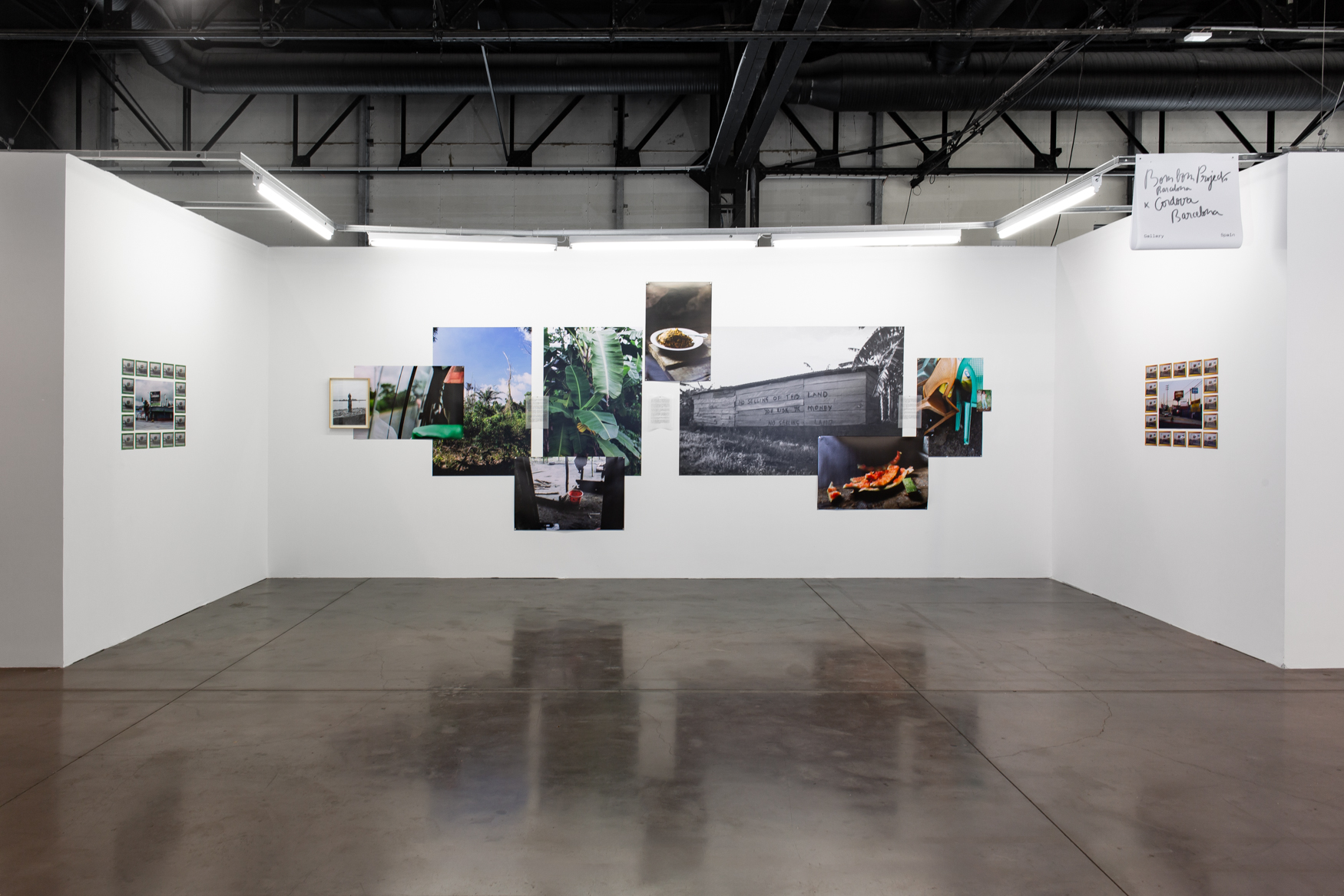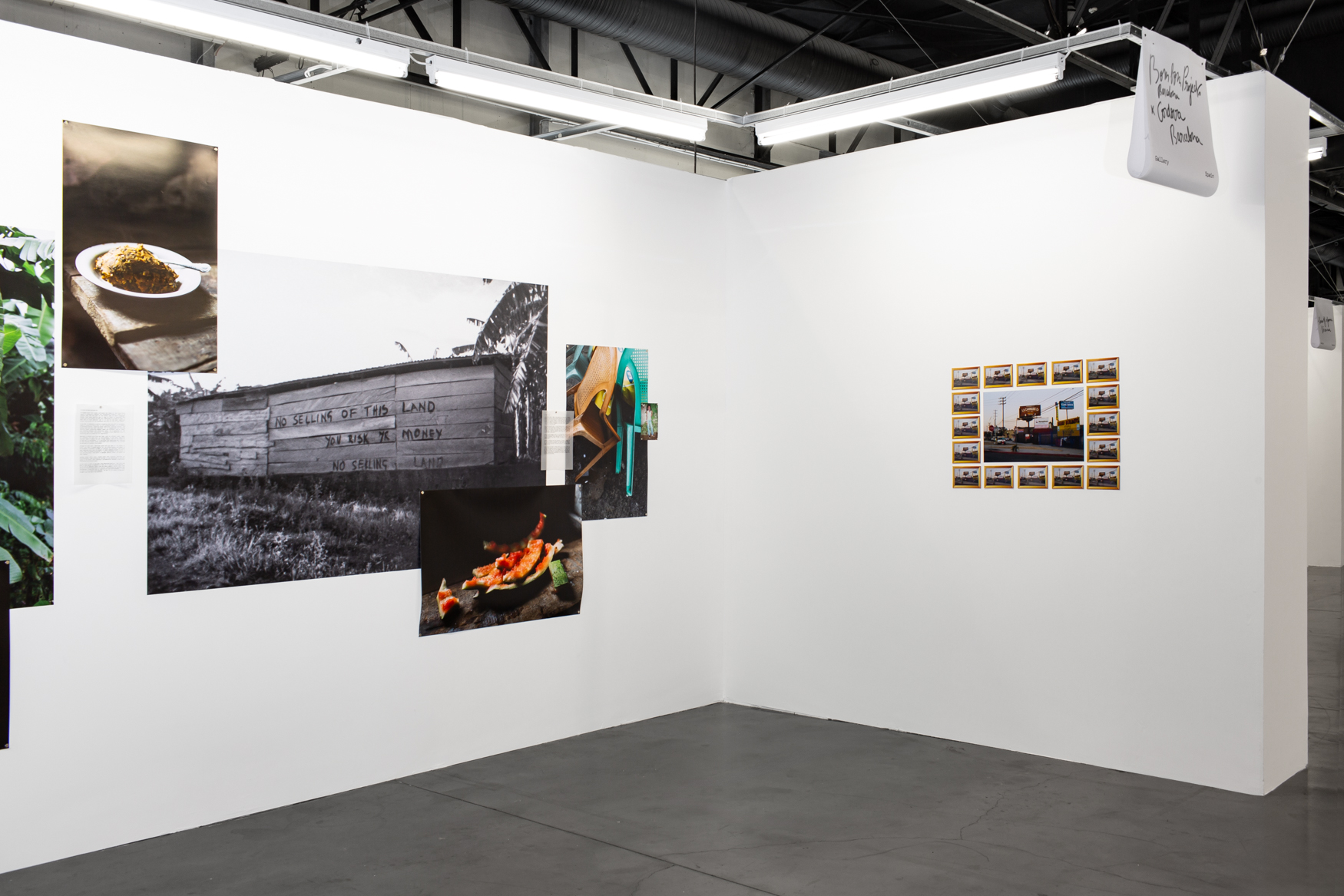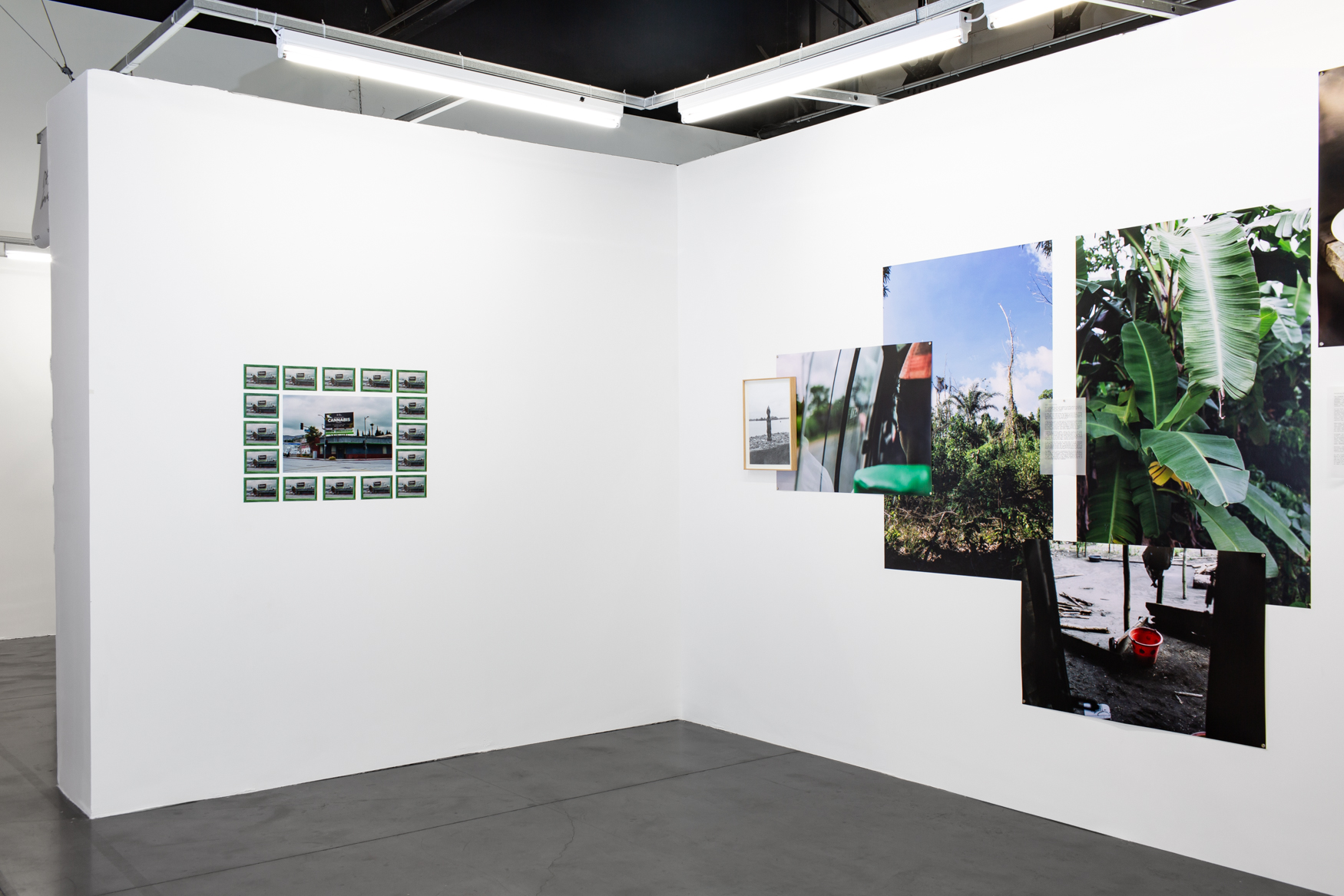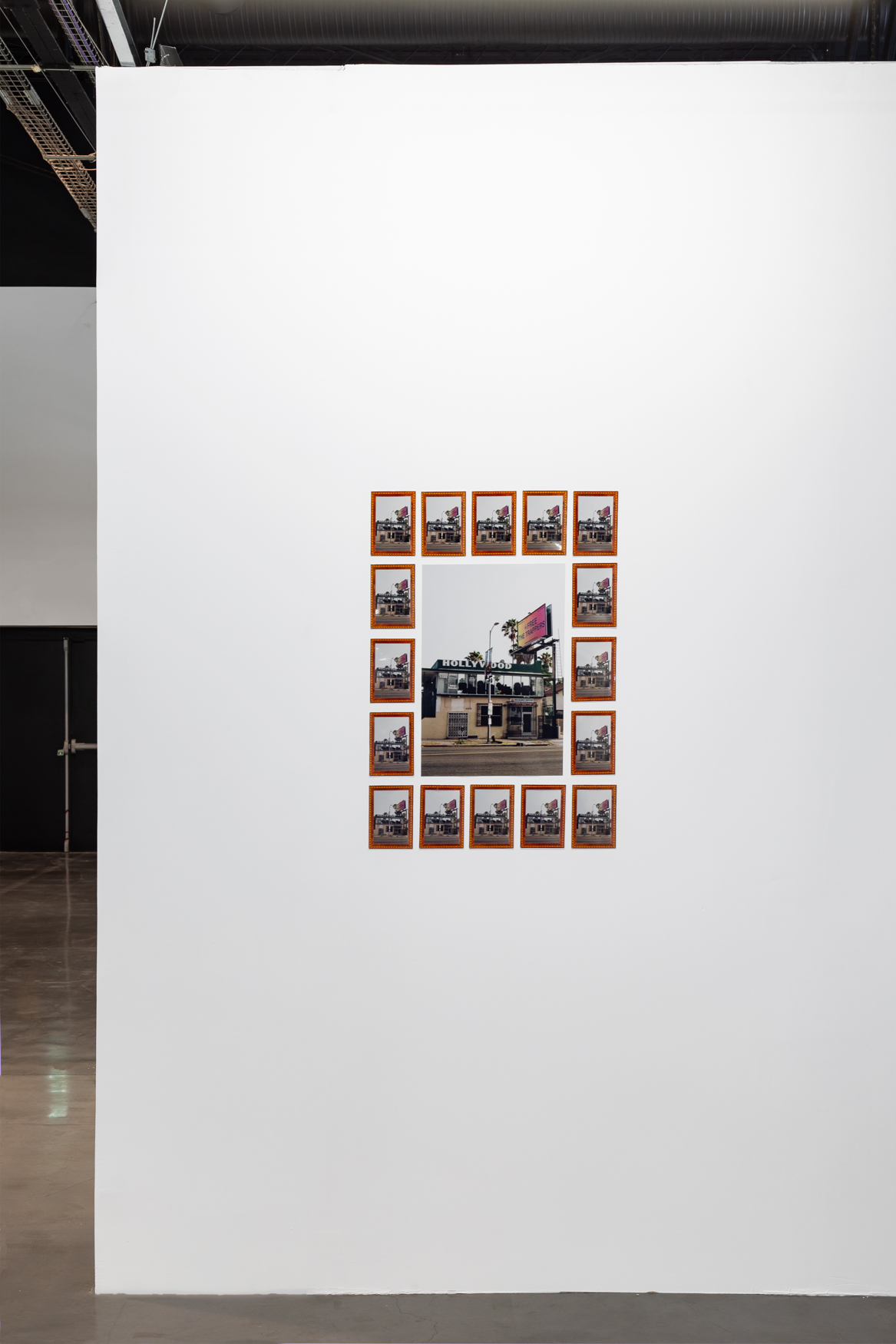29 August – 01 September 2024
Marseille





know more about
We are very pleased to announce our participation in the 2024 edition of Art-o-Rama with a shared booth between Bombon Projects and Cordova. On this occasion, we present a series of photographic and mixed media works through a dialogue with artists Agnes Essonti Luque (Barcelona, 1996) and Mona Varichon (Paris, 1989).
Agnes Essonti Luque is a Cameroonian and Spanish artist whose work delves into fundamental issues of identity, culture, and ancestry. Through her work, Essonti explores and challenges the complexities of cultural belonging and identity using a variety of artistic media, including photography, video, and performance. These media become tools with which she configures and reconstructs her own memories, offering an introspective view of her heritage and experiences.
A Journey (2024) is an installation by Essonti based on a wooden statuette from the collection of the Ethnological Museum of Catalonia, the result of an invitation by curator Rosa Lleó to participate in the show Reenchantments, an exhibition that brings together the research of 10 artists on ten pieces from the collection and proposes a new reading of these works and the possibility of imagining new futures.
Essonti has chosen a wooden statuette from Central Africa to revisit questions focused on ethnographic concepts —because ethnography is a fundamentally European science— contrasting them with notions of ancestry and spirituality from African cosmologies. This statuette, currently in the reserve, is a protected piece with heritage status and can only be seen in exhibitions. But if, beyond the authenticity of the object, what interests us is its meaning, it could be presented in a different way, in this case through a replica. The artist photographed the original statue in the museum and commissioned a copy from Ibrahima Seydi, a Senegalese artisan living in Barcelona. This replica is “reenchanted” and travels with the artist to Cameroon, engaging with both place and family and friends. It is captured in a photographic series
“I have to admit that this object interests me far more for what it was, or could have been, than for what it is today (a piece of wood, a number, nothing). The only information we have says “ancestor statue” and tells us about the material it is made of, where it was acquired from, and when. Who was this ancestor, and what was she like? Does she live on within this object? Did she magically disappear at the very moment Jordi Sabater i Pi decided that the statue was to be brought to Barcelona’s Ethnographic Museum? Or did she die slowly, shut away in a storeroom? How did her descendants remember her when the statue was no longer there? Has anybody been looking for her over all these years?”. —Agnes Essonti Luque
Deeply influenced by decolonial movements and activism, Essonti’s work addresses themes of self representation, narratives of identity and belonging, and food politics providing a platform for reflection and dialogue on cultural representation and resistance.
Esosnti resides and works in Hospitalet de Llobregat. Her academic background includes studies in Photography in London, a postgraduate degree in Culture and Thought of Black Peoples, and a master’s degree in Photography. Essonti’s work has been shown in international exhibitions, including 1384 Days Wide at Rencontres de Bamako 2015, 14th Dakar Biennale OFF and XI Lanzarote Art Biennial. In 2023 she produced the performance Bayam Sellam, La Bissaperie at the Museo Nacional Thyssen-Bornemisza and in the MNCARS.
Mona Varichon is a Franco-Egyptian artist and translator based in Paris and New York City who received her MFA from ArtCenter (Pasadena, US) in 2018.
The images on display come from Varichon’s ongoing series entitled Free the trappers/Libérez les dealers (2024) which documents billboards advertising marijuana dispensaries after the recent legalization in California and New York. Varichon’s images shed light on this particular moment in cultural and legal history and seek to question the language, imagery and intentions of this newly sanctioned industry.
Her work uses advertisement, social media, popular culture, art history and ‘amateur’ art forms to both chronicle and comment on our present moment. Her photographs, films and performances archive, pay homage to, or contextualize major cultural events, as well as intimate experiences that she captures or puts on display in order to make them shareable. Her pieces circulate on YouTube, in various stores, mailboxes, interiors, cinemas and art spaces.
Recent exhibits include Air de Paris and the Centre Pompidou (Paris, France), the Capc musée d’art contemporain (Bordeaux, France), the Van Gogh Foundation (Arles, France), the Villa Arson (Nice, France), Alienze (Vienna, Austria), the Sifang Art Museum Satellite (Shanghai, China), the National Gallery (Prague, Czech Republic), Cocotte (Treignac, France), and The Vanity Gallery, the Redcat Theatre, Kristina Kite and The Egyptian Theater (Los Angeles, CA). With the FRAC Lorraine (Metz, France), she translated the catalogs of artists Pippa Garner, Betye Saar, Christina Ramberg and Cécile B. Evans into French. She was nominated for the 2024 Ricard Prize by curator Arlène Berceliot-Courtin and will take part in the Prize’s exhibition in September 2024 at the Fondation Ricard, Paris.